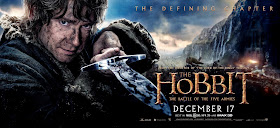Two long, sturdy strips of cloth hung from a fixed
point above the stage. A broad-shouldered man and a lithe woman climbed these
pieces of cloth with creative tricks and soon they were both high in the air
while the polished wood floor of the stage was dangerously far below. Already,
we were impressed, they did a few tricks and arranged themselves, and then…
They swung gracefully out over our heads, the long
strands of cloth trailing. They flew, his larger frame behind hers, she leaning
against him. They walked in the invisible air, side by side, stepping lightly
and in synchronization, delicately pointing their toes. He took her in his
arms, crossed her quickly over his body and in various dramatic skater’s poses,
they continued to fly around and around above our heads. He let her go and caught
her with his feet as our hearts jumped into our mouths.
I was struck with the thought, “I want to get
married.”
To me, it was a beautiful picture of marriage, one
that I wanted to imitate.
It was beautiful, it was romantic. Yet, it was so
dangerous. If he dropped her, if she fell…the results were unthinkable.
If they fell, they would likely be killed, and if
not, then grievously injured. Yet not only they were in danger, but those
watching. The audience too could be injured: physically if they fell onto the
audience, emotionally if they fell on the stage. Just like a failed marriage,
not only would it hurt the couple, but all those near too. And think of the
emotional guilt he would feel for having dropped his partner.
To fly like this required strength and trust. Both
must possess these qualities, but the man especially the strength as he bore
her weight and his own, and she the trust as he at times lifted or caught her
as they swung through the air, almost touching the ceiling.
In Ephesians 5:22-27, we learn, “Wives, submit
yourselves to your own husbands as you do to the Lord. For the husband is the
head of the wife as Christ is the head of the church, his body, of which he is
the Savior. Now as the church submits to Christ, so also wives should submit to
their husbands in everything. Husbands, love your wives, just as Christ loved
the church and gave himself up for her to make her holy, cleansing her by the
washing with water through the word, and to present her to himself as a radiant
church, without stain or wrinkle or any other blemish, but holy and blameless,”
(Ephesians 5:22-27). The wife is to submit to her husband. If I’m to submit to
someone, I want a man I can trust with my life, just as this woman trusted him
to catch her. The husband is to help his wife heavenward, just as the male
acrobat lifted her, and helped her stay high on the cloths.
~August 2014. Beijing, China.







